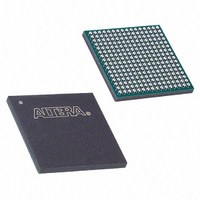EP3C5F256C8N Altera, EP3C5F256C8N Datasheet - Page 139

EP3C5F256C8N
Manufacturer Part Number
EP3C5F256C8N
Description
IC CYCLONE III FPGA 5K 256-FBGA
Manufacturer
Altera
Series
Cyclone® IIIr
Datasheets
1.EP3C5F256C8N.pdf
(5 pages)
2.EP3C5F256C8N.pdf
(34 pages)
3.EP3C5F256C8N.pdf
(66 pages)
4.EP3C5F256C8N.pdf
(14 pages)
5.EP3C5F256C8N.pdf
(76 pages)
6.EP3C10M164C8N.pdf
(350 pages)
Specifications of EP3C5F256C8N
Number Of Logic Elements/cells
5136
Number Of Labs/clbs
321
Total Ram Bits
423936
Number Of I /o
182
Voltage - Supply
1.15 V ~ 1.25 V
Mounting Type
Surface Mount
Operating Temperature
0°C ~ 85°C
Package / Case
256-FBGA
No. Of Logic Blocks
321
Family Type
Cyclone III
No. Of I/o's
182
I/o Supply Voltage
3.3V
Operating Frequency Max
402MHz
Operating Temperature Range
0°C To +85°C
Rohs Compliant
Yes
For Use With
544-2601 - KIT DEV CYCLONE III LS EP3CLS200544-2411 - KIT DEV NIOS II CYCLONE III ED.
Lead Free Status / RoHS Status
Lead free / RoHS Compliant
Number Of Gates
-
Other names
544-2423
EP3C5F256C8N
EP3C5F256C8N
Available stocks
Company
Part Number
Manufacturer
Quantity
Price
Company:
Part Number:
EP3C5F256C8N
Manufacturer:
ALTERA
Quantity:
853
Part Number:
EP3C5F256C8N
Manufacturer:
ALTERA/阿尔特拉
Quantity:
20 000
- EP3C5F256C8N PDF datasheet
- EP3C5F256C8N PDF datasheet #2
- EP3C5F256C8N PDF datasheet #3
- EP3C5F256C8N PDF datasheet #4
- EP3C5F256C8N PDF datasheet #5
- EP3C10M164C8N PDF datasheet #6
- Current page: 139 of 350
- Download datasheet (8Mb)
Chapter 7: High-Speed Differential Interfaces in the Cyclone III Device Family
True Output Buffer Feature
Figure 7–13. Differential HSTL Class II Interface
Note to
(1) PLL output clock pins do not support differential HSTL Class II I/O standard.
True Output Buffer Feature
Programmable Pre-Emphasis
Figure 7–14. The Output Signal with Pre-Emphasis
© December 2009
Figure
Output Buffer (1)
7–13:
Altera Corporation
Figure 7–13
Cyclone III device family true differential transmitters offer programmable
pre-emphasis—you can choose to turn it on or off. The default setting is on.
The programmable pre-emphasis boosts the high frequencies of the output signal to
compensate the frequency-dependant attenuation of the transmission line to
maximize the data eye opening at the far-end receiver. Without pre-emphasis, the
output current is limited by the V
transmitter. At high frequency, the slew rate may not be fast enough to reach full V
before the next edge; this may lead to pattern dependent jitter. With pre-emphasis, the
output current is momentarily boosted during switching to increase the output slew
rate. The overshoot produced by this extra switching current is different from the
overshoot caused by signal reflection. This overshoot happens only during switching,
and does not produce ringing.
Figure 7–14
shows the differential HSTL Class II interface.
shows the differential output signal with pre-emphasis.
Negative channel (n)
V
Positive channel (p)
TT
50 Ω
V
TT
50 Ω
Z 0 = 50 Ω
Z 0 = 50 Ω
OD
specification and the output impedance of the
V
TT
Overshoot
Undershoot
V
50 Ω
OD
V
TT
50 Ω
Cyclone III Device Handbook, Volume 1
Receiver
7–15
OD
Related parts for EP3C5F256C8N
Image
Part Number
Description
Manufacturer
Datasheet
Request
R

Part Number:
Description:
Cyclone III Device Data Sheet
Manufacturer:
ALTERA [Altera Corporation]
Datasheet:

Part Number:
Description:
CYCLONE II STARTER KIT EP2C20N
Manufacturer:
Altera
Datasheet:

Part Number:
Description:
CPLD, EP610 Family, ECMOS Process, 300 Gates, 16 Macro Cells, 16 Reg., 16 User I/Os, 5V Supply, 35 Speed Grade, 24DIP
Manufacturer:
Altera Corporation
Datasheet:

Part Number:
Description:
CPLD, EP610 Family, ECMOS Process, 300 Gates, 16 Macro Cells, 16 Reg., 16 User I/Os, 5V Supply, 15 Speed Grade, 24DIP
Manufacturer:
Altera Corporation
Datasheet:

Part Number:
Description:
Manufacturer:
Altera Corporation
Datasheet:

Part Number:
Description:
CPLD, EP610 Family, ECMOS Process, 300 Gates, 16 Macro Cells, 16 Reg., 16 User I/Os, 5V Supply, 30 Speed Grade, 24DIP
Manufacturer:
Altera Corporation
Datasheet:

Part Number:
Description:
High-performance, low-power erasable programmable logic devices with 8 macrocells, 10ns
Manufacturer:
Altera Corporation
Datasheet:

Part Number:
Description:
High-performance, low-power erasable programmable logic devices with 8 macrocells, 7ns
Manufacturer:
Altera Corporation
Datasheet:

Part Number:
Description:
Classic EPLD
Manufacturer:
Altera Corporation
Datasheet:

Part Number:
Description:
High-performance, low-power erasable programmable logic devices with 8 macrocells, 10ns
Manufacturer:
Altera Corporation
Datasheet:

Part Number:
Description:
Manufacturer:
Altera Corporation
Datasheet:

Part Number:
Description:
Manufacturer:
Altera Corporation
Datasheet:

Part Number:
Description:
Manufacturer:
Altera Corporation
Datasheet:












